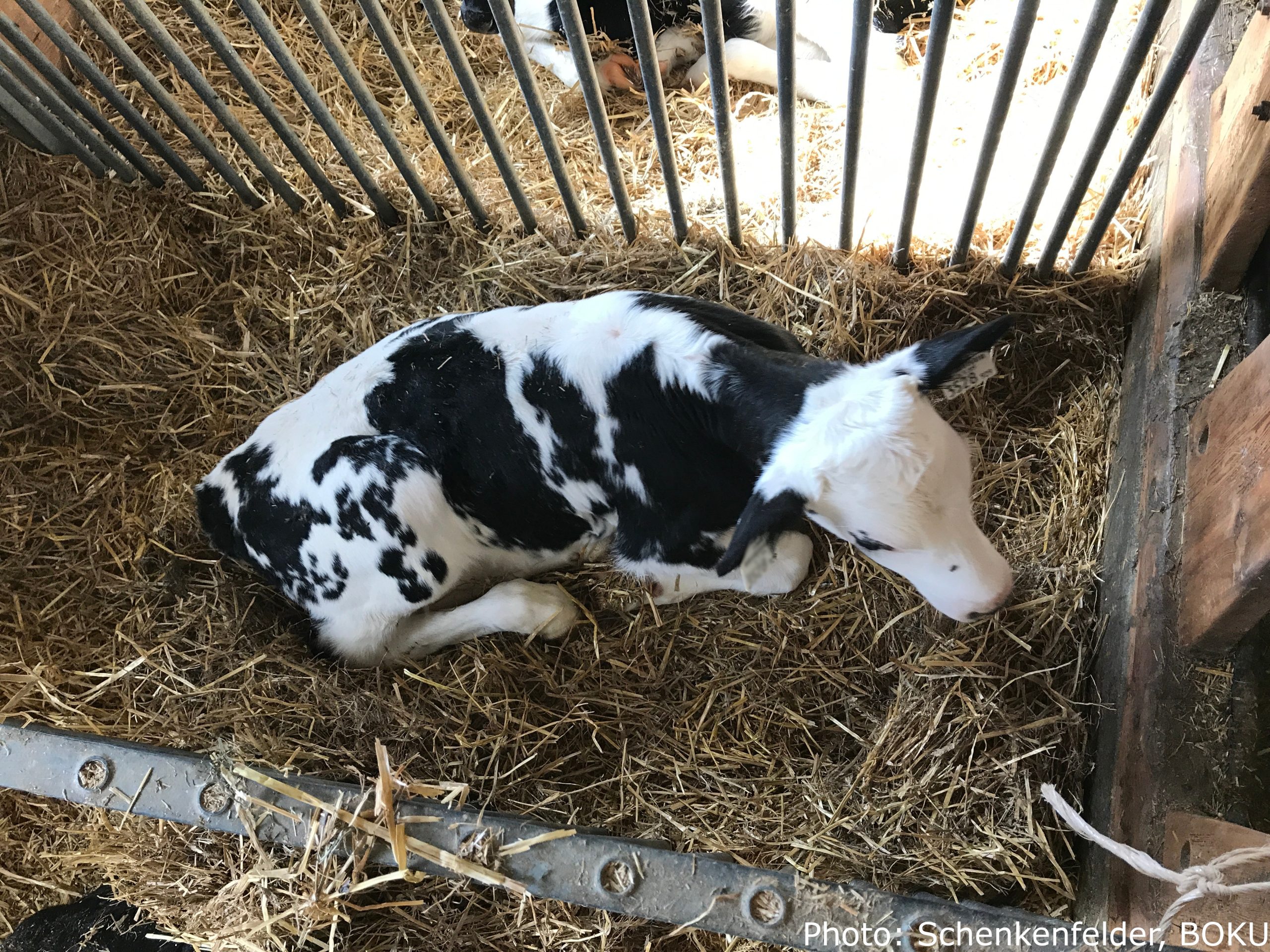SUMMARY
Question to EURCAW on Appropriate Care of Male Dairy Calves
Calf46 Schenkenfelder_BOKU.jpg
EURCAW Ruminants & Equines provides technical and scientific advice on ruminant and equine welfare. This service, referred to as Questions to EURCAW (Q2E) is open to Competent Authorities and government policy workers of EU Member States.
EURCAW Ruminants & Equines has published its response to a question received in relation to the appropriate care of male dairy calves.
It states that male calves of specialised dairy breeds are often considered to be a by-product of low economic value and their mortality is higher than that of female dairy calves, as well as that of beef calves. Management factors are assumed to play a determining role, with less care provided to male dairy calves than to female ones due to their low economic value.
The response then sets out the current situation in terms of how male dairy calves are cared for. Compared with female calves they:
- often receive less colostrum – leading to poor colostral immunity
- are fed smaller amounts of milk
- are housed in larger groups with a reduced lying surface and in a barn with poor ambiance
- receive less care of their navels – which can result in local infection or more generalised infections
- are vaccinated less often
In addition, young male dairy calves may not be fed for long periods before being transported (e.g., last meal withheld).
The response goes on to make recommendations for the care of male dairy calves:
- Provision of colostrum: Calves should receive 2 L of colostrum during the first 6 h after birth and 2 L during the next 6 h (figures should be adjusted so that total colostrum fed is about 10 % calf weight). The colostrum should be of good quality (> 50 g/L protein in case of fresh colostrum, > 100 g/L in case of preserved colostrum)
- Milk feeding: Calves are often fed an amount of milk equal to 10 % of their body weight, whereas 20 % in at least two meals is recommended to avoid hunger and improve welfare
- Solid feeding: From around 2 weeks of age, calves must be supplemented with solid feed, e.g., with concentrates and roughage
- Handling: Handling calves calmly and patiently reduces stress and promotes positive welfare
- Transport: If young calves are transported they should be provided with meals (milk) at normal intervals. Assessment of fitness for transport should be based on age, navel conditions and rectal temperature
Finally, the response suggests ways in which the value of male dairy calves could be increased.
- Extending the lactation period of dairy cows and consequently the calving-to-calving interval
- Making use of sexed (female) semen for restocking the dairy herd.
- Use semen from beef bulls for breeding beyond restocking needs to produce cross-bred calves with higher value for fattening.
- Establishing contracts between dairy and beef or veal farmers so that the former guarantee the ‘high quality’ and improved care of the calves, supported by a higher premium value.
- Fattening male dairy calves on the dairy farm to produce veal meat, combined with on-farm slaughter and short supply chain.
The full response can be read here: https://care4dairy.eu/wp-content/uploads/2023/02/Q2E_Ruminants_Equines_2022_002.pdf
For more information on Q2E go to https://care4dairy.eu/questions-to-eurcaw/





